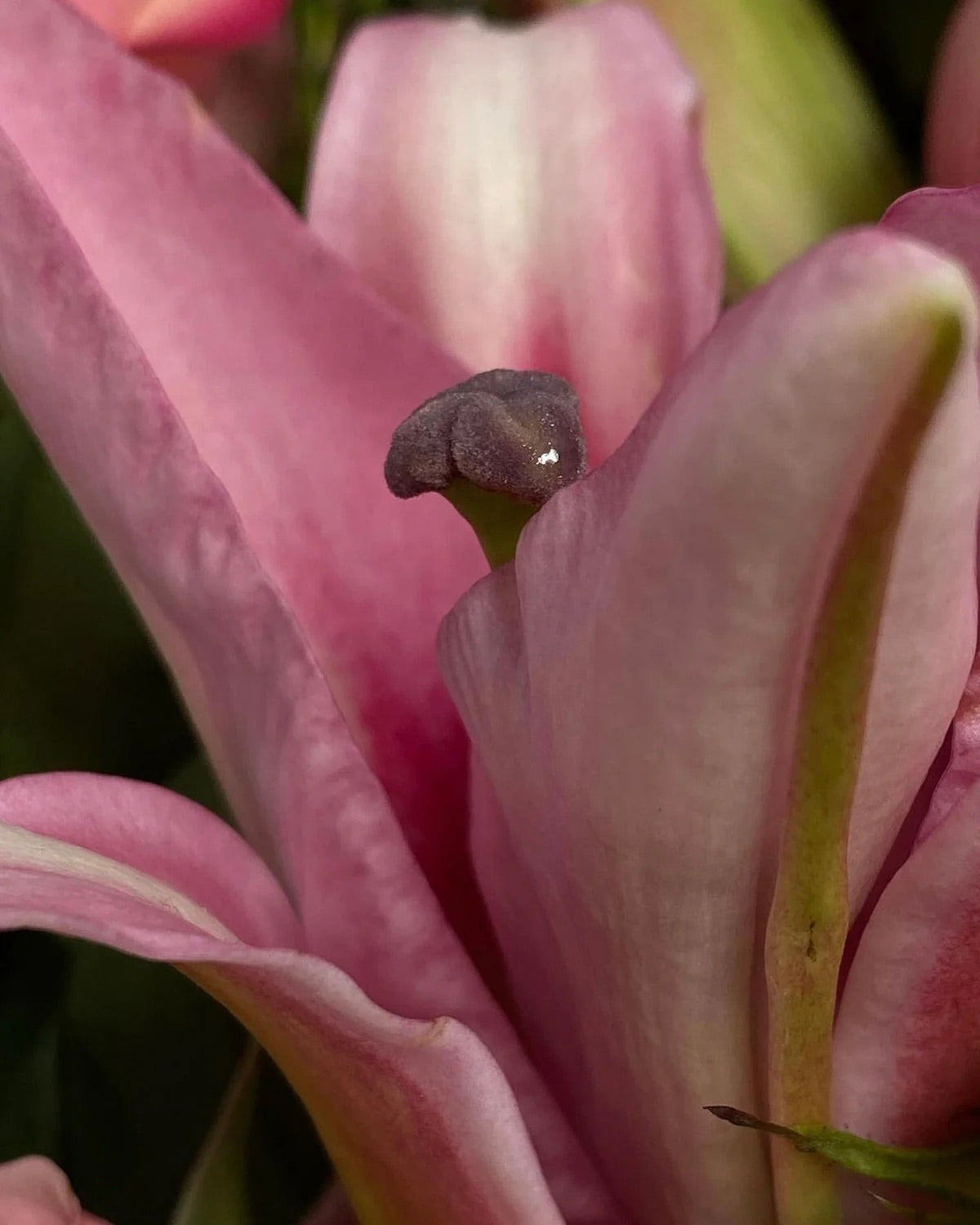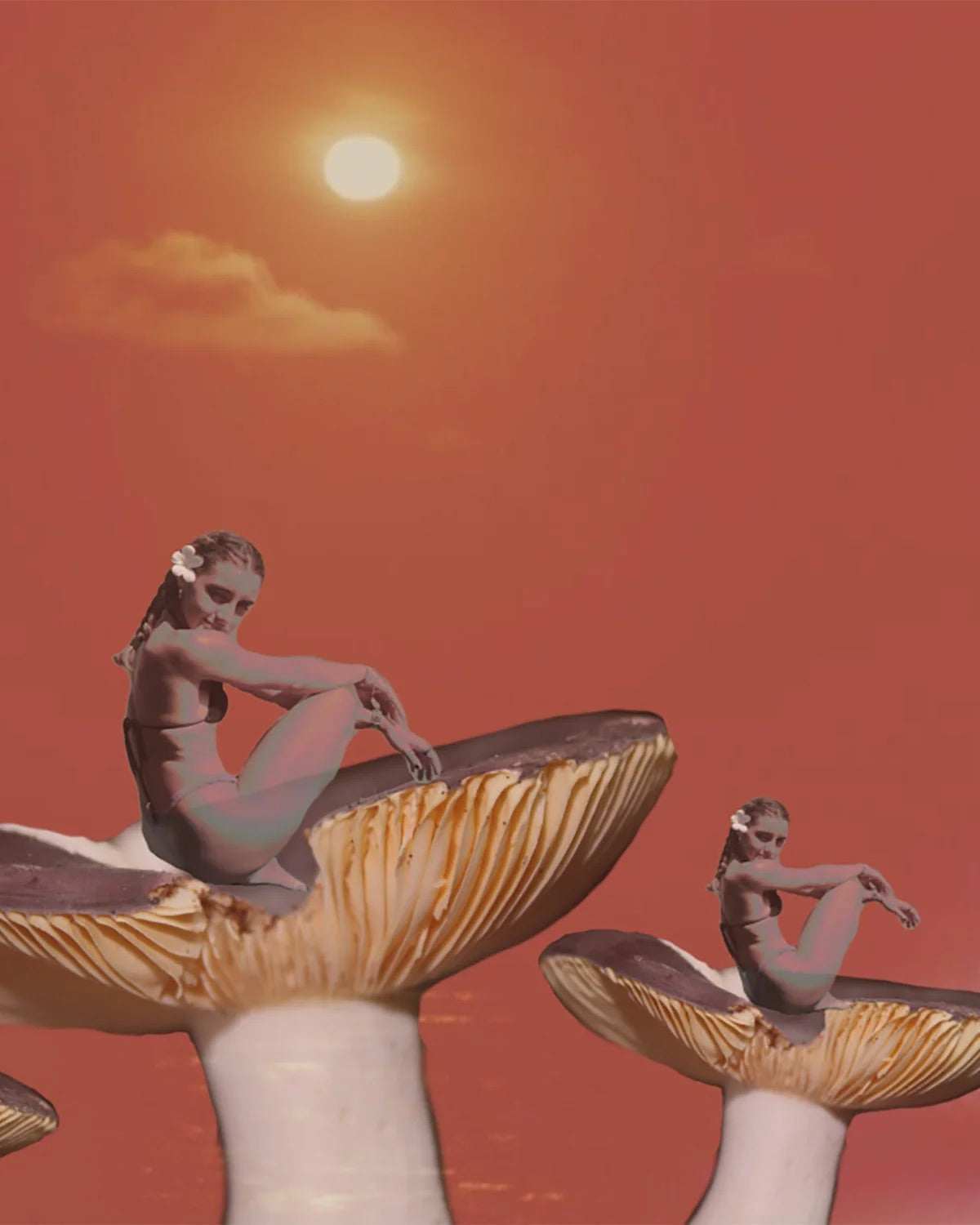Just say No!
If you, like us, grew up in the '80s or '90s, you’ll remember the “just say no” campaigns. Drugs, across the board, without exception—were bad**!**. In light of these scare tactics being deeply embedded in our cultural consciousness, the current renaissance of psychedelics feels, well, pretty radical.
When we talk about psychedelics here at Mabel, we’re referring to magic mushrooms. While not all mushrooms are psychedelic, out of roughly 140,000 species identified, only about 200 contain psilocybin, the psychoactive compound, and it’s the ones that have captivated humans for millennia.
Mushrooms were always part of our cultures
The use of magic mushrooms is far from a modern phenomenon. Their presence spanned the globe, influencing cultures and spiritual practices in nearly every corner of the world. From the Eleusinian Mysteries in ancient Greece to Mazatec rituals in Mexico to depictions on the walls of the pyramids, suggesting their significant ritual or medical role, psilocybin mushrooms have played a central role in human history.
Cave paintings, like the one in Algeria dating back to 9000 BC, depict shamans holding mushrooms, a testament to their ancient role in human consciousness. One particularly intriguing idea is the Stoned Ape Theory, which suggests that our cognitive leap from Homo erectus to Homo sapiens might have been influenced by magic mushrooms. According to this hypothesis, the expanded consciousness brought on by psilocybin could have permitted our prehistoric ancestors to dream, imagine, and develop cognition.
But, as with so many ancient practices, inquisitors, conquerors, and modern society slowly eroded these sacred tools from our consciousness. The power of mushrooms was forgotten, or at least, suppressed.
The Rediscovery: How Mushrooms Came Back Into the Spotlight
So how did magic mushrooms make their way back into Western consciousness?
We owe much of their rediscovery to R. Gordon Wasson, an American banker and ethnomycologist, and his wife, Valentina. While traveling through Mexico in the 1950s, they came across an indigenous tribe using psilocybin mushrooms in their sacred rituals. Fascinated by the practice and its profound effects, the Wassons documented their experience and published it in Life magazine, where it took America by storm. It was in this magazine that the word magic mushroom came to life and never left.
But Wasson’s curiosity didn’t stop there. He sent samples of the mushrooms to Albert Hofmann, the Swiss chemist famous for discovering LSD. Hofmann successfully isolated psilocybin, synthesized it, and shared it with universities worldwide for research. This ignited nearly two decades of solid scientific studies, examining psilocybin’s potential for treating treatment-resistant depression, addictions, anxiety**,** and much more.
From research labs, the magic mushroom slowly crept into the hands of an eclectic crowd of powerful opinion-makers, socialites, and scholars, eventually becoming central to the counterculture movement known as the hippies.
The Nixon Years: Shut It Down
Which brings us to Nixon—and the crackdown that followed.
Despite the promising research and psilocybin’s potential for treating conditions such as alcoholism, autism, and depression, it all came to a crushing halt in the late 1960s when mushrooms were classified as a Schedule 1 drug.
A Schedule 1 drug is defined as having a “high potential for abuse” and “no accepted medical use,” a classification that psilocybin still holds in many places today. What’s important to note is that with magic mushrooms:
- There is no known lethal dose.
- There is no toxicity.
- The effects wear off after a few hours.
- They are non-addictive.
We challenge you to walk into any pharmacy and find an over-the-counter drug that wouldn’t kill or cause serious harm if taken in too large a dose.
To summarize, the promising studies on psilocybin were brought to a full stop in the late ‘60s, based on zero evidence justifying a Schedule 1 classification.
Underground Research: The Esalen Institute and Brave Pioneers
Despite the legal barriers imposed by Nixon’s War on Drugs, the exploration of psychedelics did not end. In the decades that followed, underground research and activism kept the flame alive. One of the key places that fostered this quiet resurgence was the Esalen Institute in California. Throughout the 1970s and beyond, Esalen became a hub for psychological and spiritual exploration, with courageous thinkers continuing to explore the therapeutic and transformative potential of psychedelics, despite their illegality.
It was from Esalen that influential figures like Lady Amanda Feilding emerged. Feilding would go on to establish the Beckley Foundation, which has become one of the world’s leading organizations advocating for the reform of psychedelic policies and conducting breakthrough research into their benefits. Meanwhile, researchers like Roland Griffiths and William "Bill" Richards began their pioneering studies on psychedelics at Johns Hopkins University in 1999, laying the scientific foundation for today’s clinical research into psilocybin’s therapeutic potential.
These brave pioneers and institutions worked tirelessly to keep the potential of psychedelics alive, pushing for renewed scientific study and cultural acceptance in the face of ongoing political and legal challenges.
A New Chapter: Psilocybin's Modern Comeback
It would take half a century before any jurisdiction in the U.S. began to reconsider psilocybin’s classification. After decades of persistent education, advocacy, rigorous research, and tremendous work from grassroots movements, states and governments are finally reexamining their stance on psychedelics as tools of healing and discovery.
As of now, the FDA has granted breakthrough designation to psilocybin and is pushing for an expedited review of the compound. Across the European Union and the UK, similar studies are underway as countries reconsider the potential of psychedelics in mental health care.
Here at Mabel, we are working toward the day when mushrooms are legalized worldwide. Until then, we are proud to offer legal psilocybin truffles from the Netherlands.
The Science of Psilocybin: Rewiring the Brain
At the core of psilocybin's therapeutic potential is its ability to rewire the brain. Psilocybin is a serotonergic psychedelic, meaning it affects the brain’s serotonin system. Researchers have discovered that, instead of increasing brain activity, psilocybin reduces activity in certain key areas, specifically the Default Mode Network (DMN).
The DMN is like the brain’s autopilot. It’s active when you’re daydreaming, worrying, or revisiting memories. While useful for conserving mental energy, an overactive DMN can lead to negative thought loops, rumination, and depressive states. By quieting this network, psilocybin allows other parts of the brain to connect in new ways, leading to fresh insights and perspectives.
This reduction in DMN activity creates an unconstrained state of cognition, fostering neuroplasticity—the brain’s ability to form new neural connections. This “rewiring” of the brain can help people break free from entrenched thought patterns and embrace new ways of thinking, which is especially beneficial for those suffering from depression, anxiety, or addiction.
A Hopeful Future
With the promising science behind psilocybin, its safe profile, and growing public acceptance, we’re standing at the edge of a new era in mental health care. Psilocybin mushrooms are proving to be one of the most exciting breakthroughs in modern science, not just for treating mental illness, but for enhancing creativity, cognitive function, and overall well-being.
The renaissance of psilocybin is more than just a resurgence of interest—it’s a return to the ancient wisdom that recognized the profound power of these sacred mushrooms.
![]()
Disclaimer: This content is for informational purposes only and not medical advice.
Read more

Menopause, a rollercoaster of hormonal changes. From unpredictable moods to unexpected physical changes, many find themselves navigating a landscape that feels foreign and honestly scary. Now Micro...

Ready to elevate your mindset? Dive into the world of microdosing with psilocybin mushrooms! This isn’t just about feeling good; it’s about unlocking your brain's potential, boosting creativity, an...


